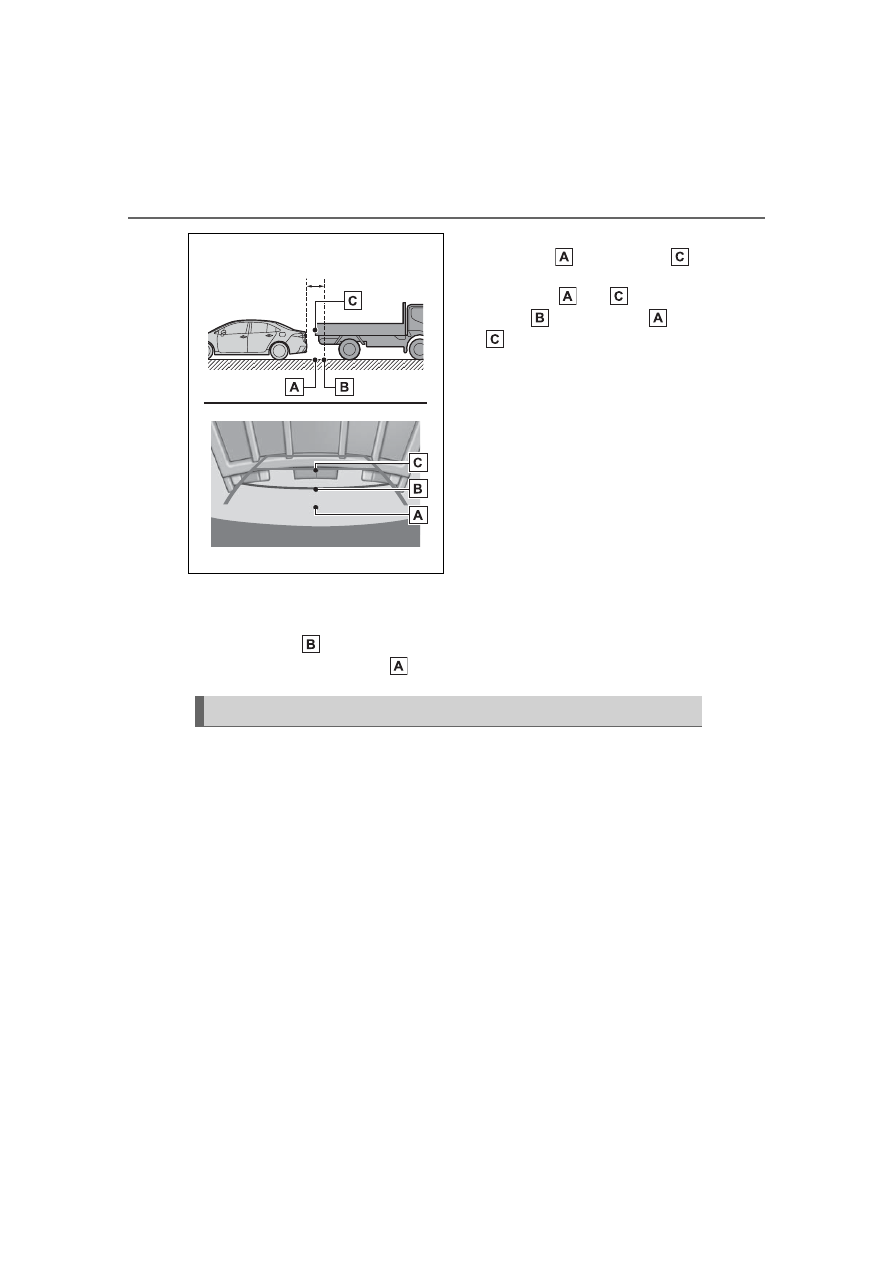Toyota Corolla (2020 year). Owner's manual - part 16

246
4-5. Using the driving support systems
Visually check the surroundings
and the area behind the vehicle. On
the screen, it appears that a truck is
parking at point
. However, in
reality if you back up to point
,
you will hit the truck. On the screen,
it appears that
is closest and
is farthest away. However, in reality,
the distance to
and
is the
same, and
is farther than
and
.
■
If you notice any symptoms
If you notice any of the following symptoms, refer to the likely cause
and the solution, and re-check.
If the symptom is not resolved by the solution, have the vehicle
inspected by your Toyota dealer.
Things you should know